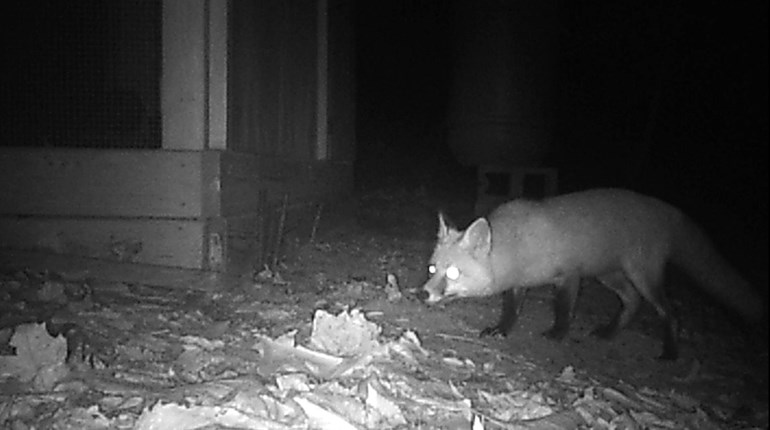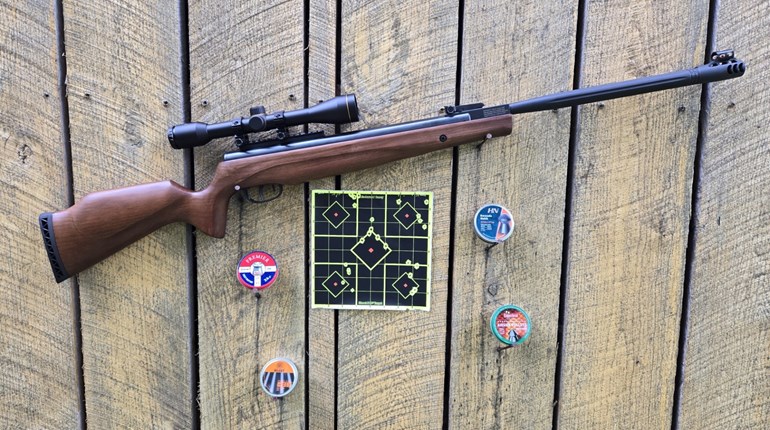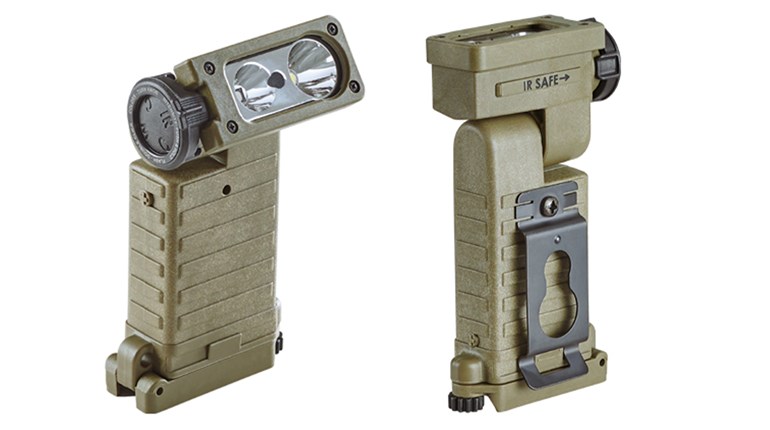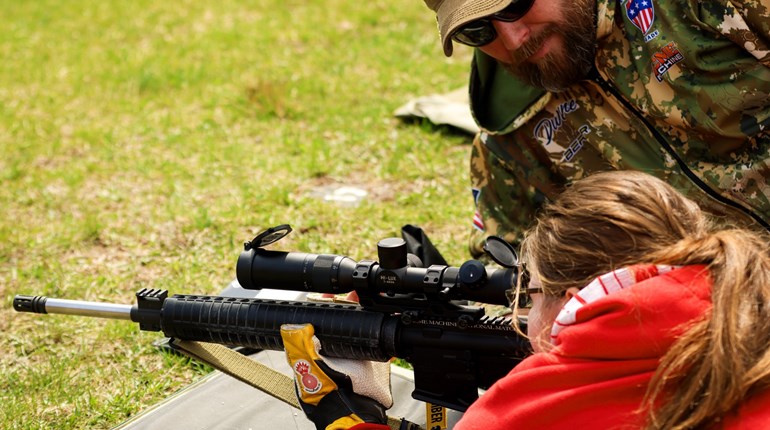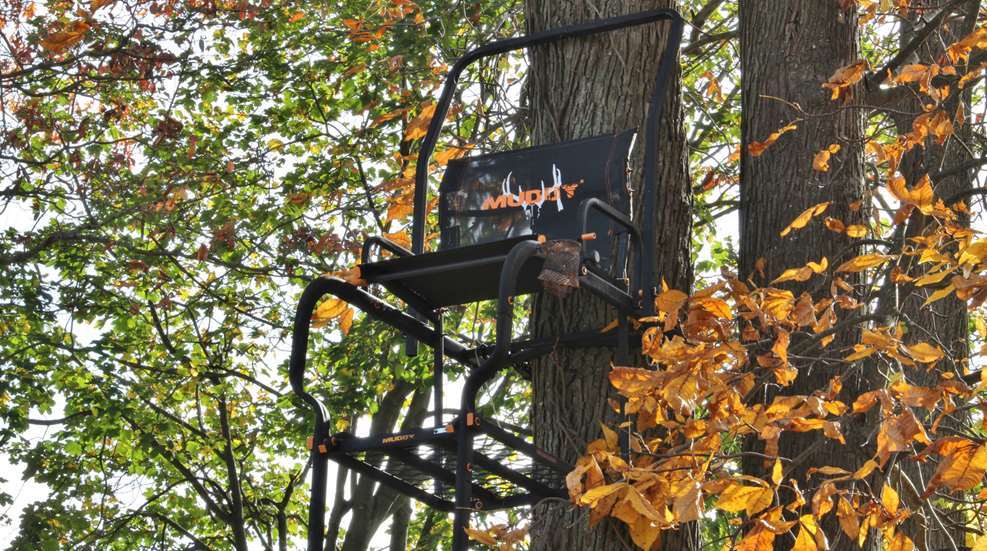
As a former hunter safety education instructor, part of my job was to review some hunting incidents from the previous season during each class I taught. There were often just as many, sometimes more, incidents involving injuries with treestands as there were with firearms! Read on to find out how to stay safe while above the line of sight of your quarry this year. 
Inspections
Each season it is imperative that each hunter inspects their gear. That gear includes treestands and safety harnesses or vests. This task is easier to remember when you can see your climbing stand hanging in the shed or garage, or your safety vest is hanging with your hunting clothes. However, do not forget your ladder stands!
Rust, a firearm and treestand’s enemy
When inspecting stands, look for rust. If the rust is a light surface rust, you can wire brush it off and then prime it and paint it with a flat green or brown to slow down the rust. If the rust is deeply pitted, the integrity of the metal may be suspect. A very careful inspection should be done to determine if the stand is safe to use. Some stands are not made to last for 20 years out in the elements. Remember: When in doubt, don’t use it.
Bolts and pins
Check your bolts and pins to be sure that they are still where they should be and if they are snug. If the bolts or pins are bent, or if they look worn, replace them. Don’t risk it! The few dollars you spend on this will save you thousands and possibly your season or even your life.
Straps and webbing
Webbing and straps can dry rot. Seats made of webbing can deteriorate and cause a scare … or an accident. Give the webbing in your seat a good pull and push while on the ground and make sure it is in good condition.
Straps are responsible for many accidents and close calls. I use ratchet straps to keep my stand secure to the trees. Ladder stands can be left out all year (and often are) for simplicity’s sake. Not many people have the time or the space to remove stands and store them each off season. Check those straps that hold the stands to the trees. The sun’s UV rays deteriorate these straps. I make a point to replace mine every other year, or any time I see fading or fuzzy spots. I also check them before using them while firmly on the ground. As stated before, a few dollars invested here is insurance!
Climbing stands have straps on them too. Some have rubberized straps; some, cables. Check these carefully for wear and tear. No one needs to be halfway up a tree and have this part of the stand give out. A fall from even 10 feet can be deadly.
The ground around the stand
I make a point to clear the ground around my stands of sharp objects such as pointed large rocks, stumps, broken limbs sticking up or anything else that might impale me if I have an … unexpected … descent. This should never happen, but if it did, I don’t want to die because I did not take the time to move a few things.
Safety vests 
Safety vests or harnesses are a MUST. Anyone can wear a safety vest, and the ones made now are so easy to use and they’re even comfortable, so there is no excuse not to wear one. All treestands come with a vest or harness these days, and for good reason. Learn how to put it on before you go afield and then practice putting it on in the dark as well.
Many vests have pockets in them, and some are reversible from blaze orange to camo for archery hunters. Still others have D rings on them to attach a drag strap to and hike out with your deer in tow. Inspect your safety vest for any damage or tears to straps. Work the buckles to be sure they audibly click and snap firmly. Put them on before heading up the ladder or climbing the tree.
Three points of contact rule
When ascending or descending a tree, always keep three points of contact on the climber, ladder or tree. It is dangerous not to do so. Keeping your balance is important, and those three points of contact help ensure this will happen. Many treestand accidents occur when going up or coming down.
Haul Line
ALWAYS use a haul line. A haul line is used to haul your firearm, bow or crossbow up to you once you are in position. Do not attempt to carry the firearm or archery equipment up with you. ALWAYS unload the firearm, bow or crossbow before attaching it to the haul line. Check it thoroughly. Don’t tie the haul line near the trigger or trigger guard.
Tell someone where you’re going
This goes without saying. Let someone know which stand or location you will be in and when you expect to return. This gives someone a point to begin searching if you don’t return on time. Also, if others are hunting the property, let them know where you are going so everyone knows safe zones of fire. This is a basic safety rule for any hunt.
 Weather-related stand safety
Weather-related stand safety
Many a big whitetail or elk has been taken while hunting a bitterly cold day in a stand for those that can hack it. However, with ice, wind, snow, rain or cold weather comes risk. Be extra careful when ascending or descending stands or trees in such conditions. Metal gets slippery and tree trunks get really slick as well. If in doubt or if the conditions deteriorate, it is best to not get in a stand. Wind can cause accidents too. If a gale is blowing, making an accurate shot from a moving tree is not likely anyway. Get down and stay safe.
Tree selection
Selecting the best tree is important. Never use a dead tree no matter how solid it seems. Never use a crooked tree or a tree that is too small. Find a straight tree with firm bark on it that the stand will stay secure to. If the tree you are attached to is not what it once was or you suspect it may no longer be a good tree to stake your life on, move immediately and carefully.
Wooden stands
I enjoy a well-built wood stand. However, they take a lot more work and can be much more dangerous if the wind twists the tree, breaks bolts or insects destroy the wood they are made from. Use screws, not nails, if you build a wood stand. Inspect it each time before using it and replace any wood or bolts or screws that you suspect are no longer good.
Use only treated wood and wood that is large enough to hold your weight (plus more). Be sure to build safety rails in your stand and check your ladder regularly. Wood stands will need to be rebuilt or replaced much more often than metal stands. I put “no skid” tape on the flooring of my wood stands to prevent slipping, and I never let anyone use my wood stand unless I personally inspect it before they use it.
This season, enjoy the view as you wait for your game to show up, but do so safely. Remind your hunting partners about treestand safety and let’s reduce and even eliminate any treestand accidents this year!














